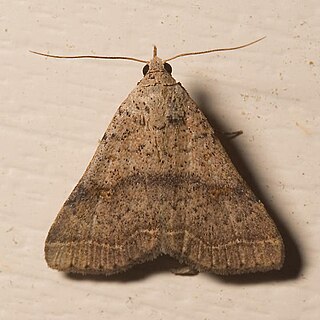
Coca is any of the four cultivated plants in the family Erythroxylaceae, native to western South America. Coca is known worldwide for its psychoactive alkaloid, cocaine.

Coca eradication is a strategy promoted by the United States government starting in 1961 as part of its "war on drugs" to eliminate the cultivation of coca, a plant whose leaves are not only traditionally used by indigenous cultures but also, in modern society, in the manufacture of cocaine. The strategy was adopted in place of running educational campaigns against drug usage. The prohibitionist strategy is being pursued in the coca-growing regions of Colombia, Peru, and formerly Bolivia, where it is highly controversial because of its environmental, health and socioeconomic impact. Furthermore, indigenous cultures living in the Altiplano, such as the Aymaras, use the coca leaf in many of their cultural traditions, notably for its medicinal qualities in alleviating the feeling of hunger, fatigue and headaches symptomatic of altitude sicknesses. The growers of coca are named Cocaleros and part of the coca production for traditional use is legal in Peru, Bolivia and Chile.

Plan Colombia was a United States foreign aid, military aid, and diplomatic initiative aimed at combating Colombian drug cartels and left-wing insurgent groups in Colombia. The plan was originally conceived in 1999 by the administrations of Colombian President Andrés Pastrana and U.S. President Bill Clinton, and signed into law in the United States in 2000.

Guaviare is a department of Colombia. It is in the southern central region of the country. Its capital is San José del Guaviare. Guaviare was created on July 4, 1991, by the new Political Constitution of Colombia. Up until that point, it was a national territory that operated as a commissariat, segregated from territory of the then Commissariat of Vaupés on December 23, 1977.

Erythroxylum coca is one of two species of cultivated coca.

The Lymantriinae are a subfamily of moths of the family Erebidae. The taxon was erected by George Hampson in 1893.

Cocaleros are the coca leaf growers of Peru and Bolivia. In response to U.S.-funded attempts to eradicate and fumigate coca crops in the Chapare region of Bolivia, cocaleros joined with other grassroots indigenous organizations in the country, such as unionized mine workers and peasants to contest the government. Evo Morales, who became president of Bolivia in 2006, was a leader of the cocalero movement in that country.
A drug policy is the policy regarding the control and regulation of psychoactive substances, particularly those that are addictive or cause physical and mental dependence. While drug policies are generally implemented by governments, entities at all levels may have specific policies related to drugs.

The illegal drug trade in Colombia has, since the 1970s, centered successively on four major drug trafficking cartels: Medellín, Cali, Norte del Valle, and North Coast, as well as several bandas criminales, or BACRIMs. The trade eventually created a new social class and influenced several aspects of Colombian culture, economics, and politics.
In 2012, coca production in Colombia amounted to 0.2% of Colombia's overall GDP and 3% of Colombia's GDP related to the agricultural sector. The great majority of coca cultivation takes place in the departments of Putumayo, Caquetá, Meta, Guaviare, Nariño, Antioquia, and Vichada.

Sameodes is a genus of moths of the family Crambidae described by Snellen in 1880.

Bleptina is a genus of litter moths of the family Erebidae. It was erected by Achille Guenée in 1854.
Metallata is a genus of moths in the family Erebidae. The genus was erected by Heinrich Benno Möschler in 1890.

Prosoparia is a genus of moths of the family Erebidae. The genus was erected by Augustus Radcliffe Grote in 1883.
Blazia is a monotypic moth genus in the subfamily Lymantriinae described by Schaus in 1927. Its only species, Blazia lixivia, was first described by Paul Dognin in 1923. It lives in Bolivia.

Eloria is a genus of moths in the subfamily Lymantriinae. The genus was erected by Francis Walker in 1855.

Thagona is a genus of moths in the subfamily Lymantriinae. The genus was erected by Heinrich Benno Möschler in 1883.

Artace is a genus of moths in the family Lasiocampidae. The genus was erected by Francis Walker in 1855.

William Schaus was an American entomologist who became known for his major contribution to the knowledge and description of new species of the Neotropical Lepidoptera.

Eloria diaphana is a moth of the subfamily Lymantriinae first described by Stoll in 1781. It is found in Suriname.














